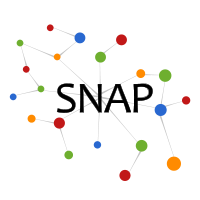Evolution of protein interactomes across the tree of life
How does Darwinian evolution change molecular networks?
Large-scale protein interactome data reveal how protein-protein interaction networks change through evolution and how changes in these networks impact phenotypes and organismal response to environmental fluctuations.
Evolution of resilience in protein interactomes across the tree of life.
Marinka Zitnik, Rok Sosic, Marcus W Feldman, and Jure Leskovec.
Proceedings of the National Academy of Sciences (PNAS), 2019, 116 (10) 4426-4433.
[bioRxiv] [Supplementary Materials]
Abstract
Phenotype robustness to environmental fluctuations is a common biological phenomenon. Although most phenotypes involve multiple proteins that interact with each other, the basic principles of how such interactome networks respond to environmental unpredictability and change during evolution are largely unknown.
Here we study interactomes of 1,840 species across the tree of life involving a total of 8,762,166 protein-protein interactions. Our study focuses on the resilience of interactomes to network failures and finds that interactomes become more resilient during evolution, meaning that interactomes become more robust to network failures over time. In bacteria, we find that a more resilient interactome is in turn associated with the greater ability of the organism to survive in a more complex, variable and competitive environment. We find that at the protein family level, proteins exhibit a coordinated rewiring of interactions over time and that a resilient interactome arises through gradual change of the network topology.
Our findings have implications for understanding molecular network structure both in the context of evolution and environment.



